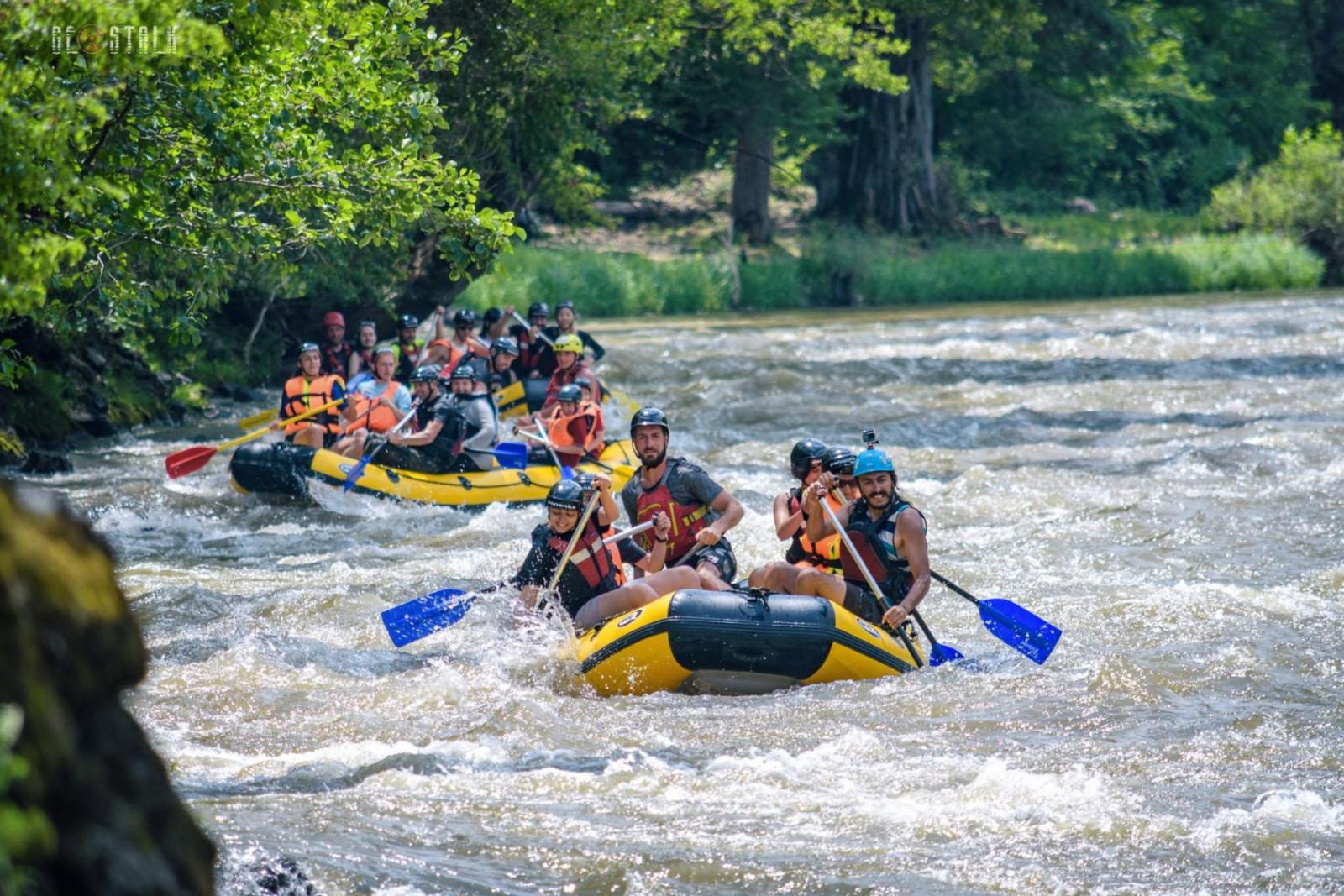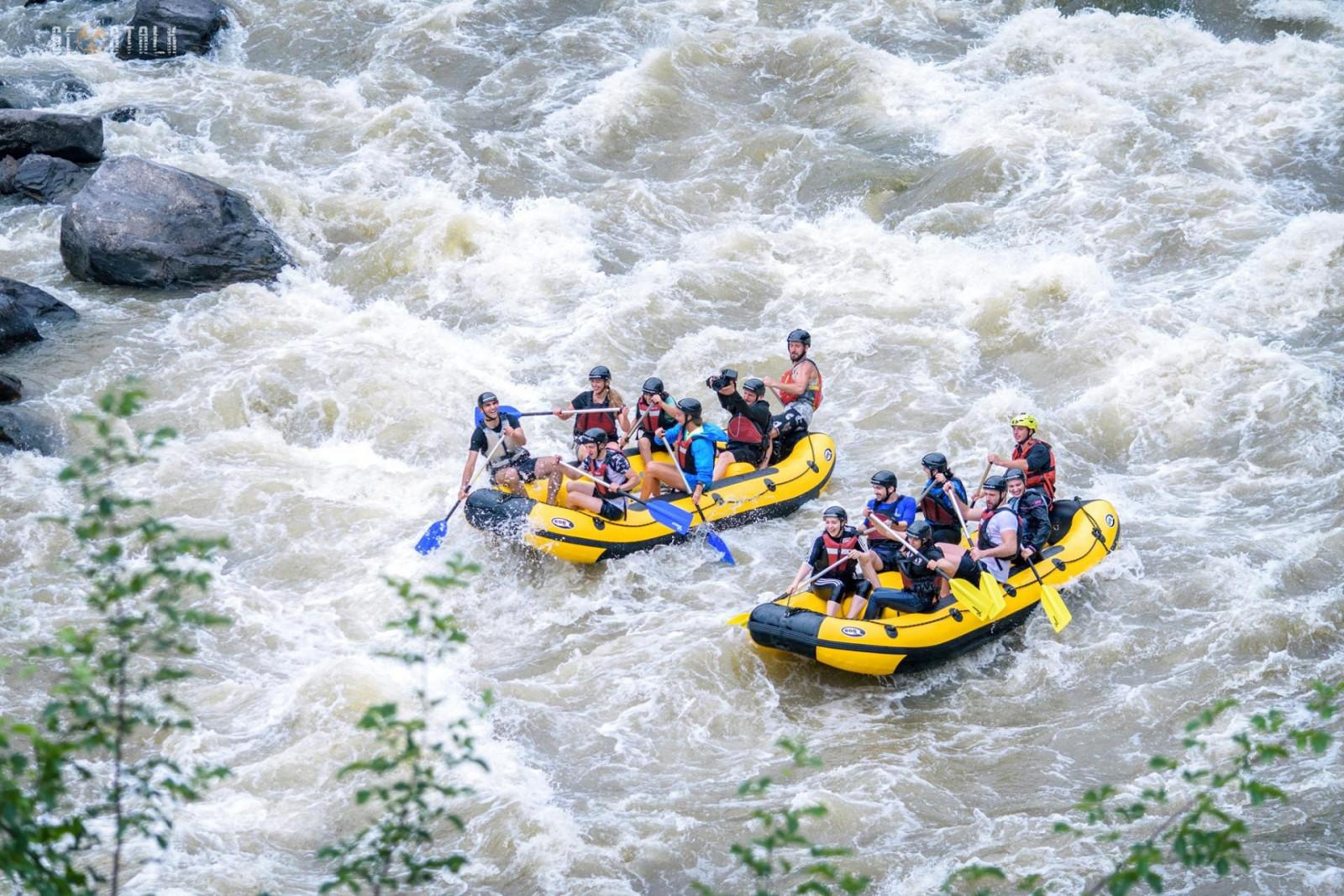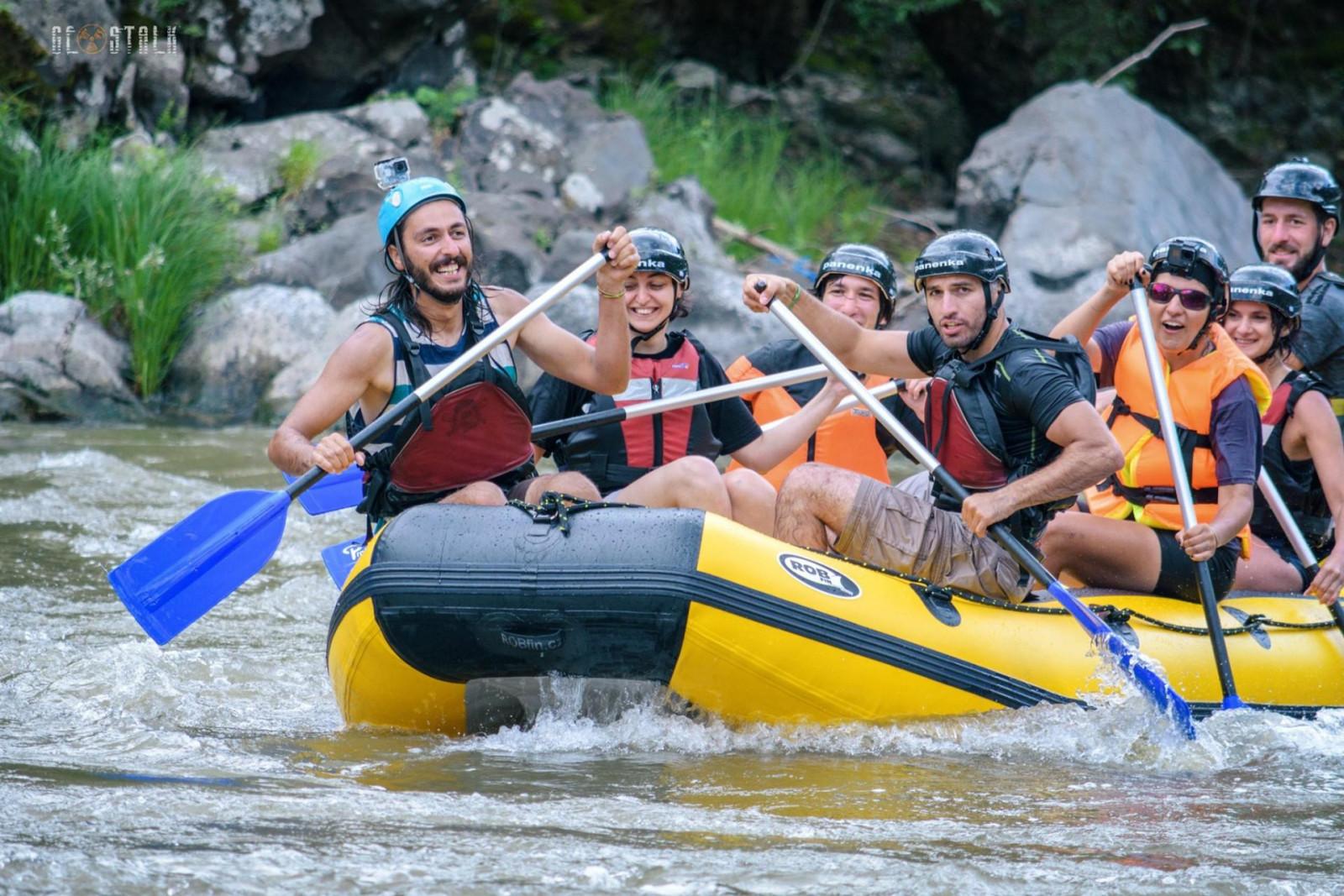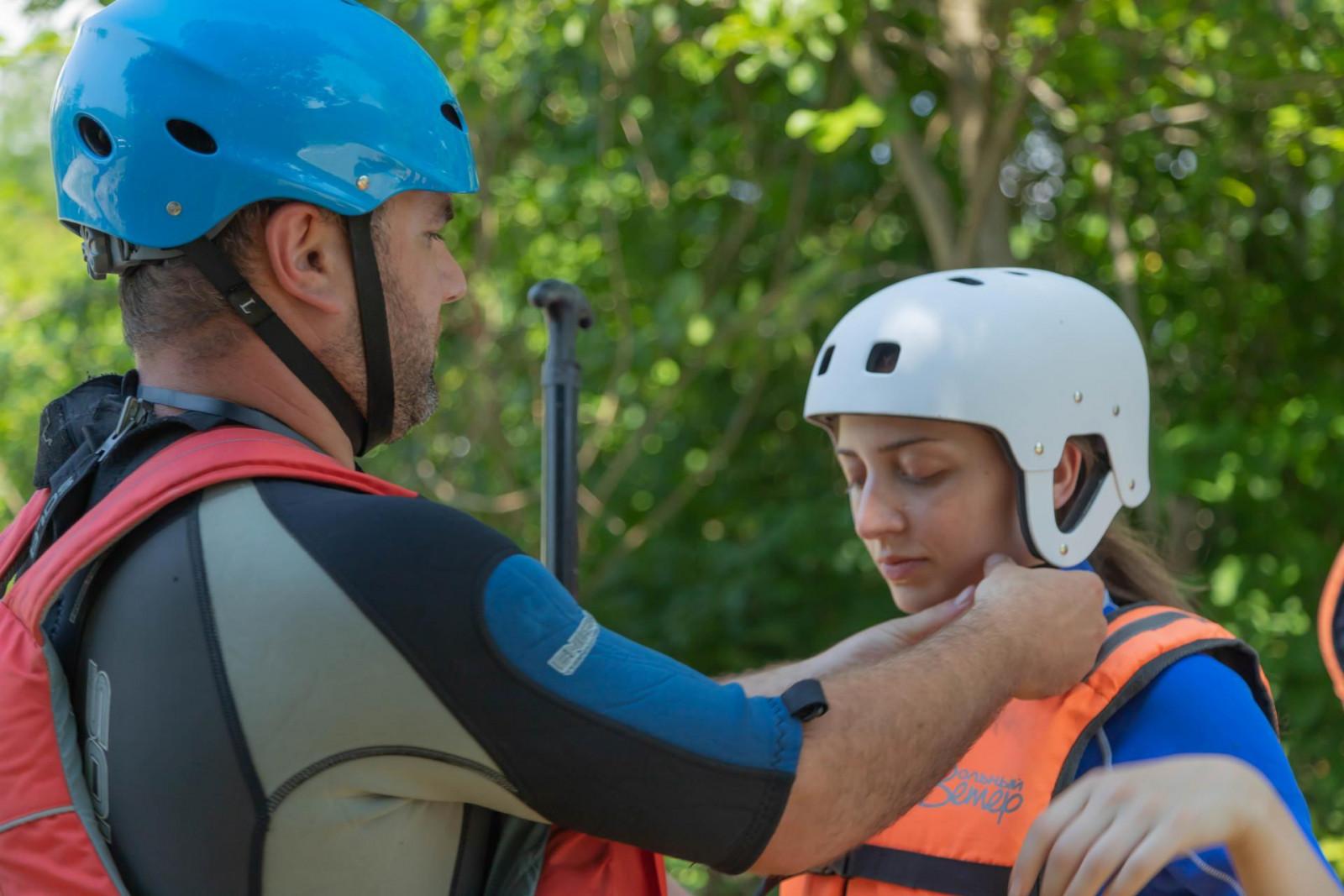
Rafting in Georgia
Summer is that time of the year when we all try to discover something new, create unforgettable memories, and refresh ourselves. Surprisingly, all this can be combined in one activity - Rafting.
Rafting in Georgia has been especially popular in the last decade. Due to the landscape of Georgia, rafting is possible in many regions.
If you are an extreme lover, then you should definitely try rafting down the different rivers of Georgia.
WHICH RIVERS CAN BE GOOD FOR RAFTING
You can go rafting in Georgia on the Aragvi, Mtkvari (aka Kura), Rioni and Adjaristskali rivers. As mentioned above, in Georgia, different rafting sections of rivers have different complexity. In Georgia, there are mainly 1-3 categories of the complexity of rivers and rafting sites.
Rafting near Tbilisi
If you are planning to go rafting near Tbilisi, then you should visit the "Admiral Rafting Group" in Pasanauri. Rafting tours are organized along the Aragvi River, in Pasanauri, where there is a rafting camp, with a comfortable environment and pleasant music. During the tour, you will have all the necessary equipment - helmet, life jacket, paddle. In addition, all boats are serviced by a professional rafting instructor who will give you a 15-20 minute briefing before entering the water.
Rafting on Mtkvari
If you drive a little further from Tbilisi, or if you are in Borjomi or Bakuriani and want to escape from the scorching summer sun and want to refresh yourself a little, be sure to raft down on Mtkvari. Extreme Rafting in Georgia will help you in this. The boat will be accompanied by a professional instructor who will give you instructions before departure and take care of your safety during the rafting. The instructors have a third-level certificate issued by the International Rafting Federation.
Rafting on Rioni
If you are going to visit Imereti or Racha-Lechkhumi, then you should definitely include extreme adventures in your plan. During the rafting on Rioni, you will pass one of the most unusual routes. Rafting tours here are organized by the Rafting in Kutaisi company. As for Rioni, you can choose sections of varying difficulty and rafting on the relatively easy Chrebalo-Nikordziri section, or if you crave extreme sensations, we recommend you rafting in the Alpina-Tvishi gorge. All instructors of the company annually undergo professional development training, which is organized by the international organization IRF. The company's instructors received third-level certificates and trip-leader certificates issued by the International Rafting Federation. In addition, all instructors have completed a first aid course.
Rafting in Batumi / Rafting in Adjara
If you want to diversify your vacation by the sea in Adjara and get charged with emotions, then rafting is also available here. For rafting, you need to come to Makhuntseti, which is only 30 kilometers from Batumi. Rafting on the Adjaristskali river is organized by the rafting club "Rafting in Makhuntseti". Anyone can raft here at any time of the year. The age for rafting starts from 2 years old, and it is not limited.
AT WHAT AGE IS IT POSSIBLE TO DO RAFTING?
The age for rafting depends on the complexity of the river and its course. For example, rafting on the Adjaristskali River is possible from the age of 2, but rafting on the Aragvi River is preferable from the age of 10. It is imperative to take into account that if an underaged is to be rafting, he must be accompanied by a parent/adult or the child must provide the written consent of the parent, proving that he agrees for the child to be rafting.
SAFE RAFTING TIPS
The most important thing for safe rafting is the instructor's professionalism. The instructor takes care of your safety throughout the entire process. Listen carefully to the instructions that the instructor always gives before starting the rafting. The instructor will teach you all the commands and give you directions to follow during the rafting.
After that, the main safety element is the equipment. During the rafting, be sure to wear a life jacket and a helmet, as well as special shoes, or closed shoes at a low profile.
Helpful Tips:
- Protect yourself from sunburn;
- Choose the right clothes;
- Have extra dry clothing with you;
- Know the correct technique of behavior while in the water;
- Never panic;
- Be sober;
- Leave valuables and equipment ashore.
DIFFICULTY CLASSIFICATION
Rafting, like all other sports, has different levels of difficulty. There are 6 different categories of rapids in rafting. The category indicates the complexity of the river/section and what skills are needed to raft along this section of the river. The difficulty level is determined by the strength of the current, the water level, and the relief of the river. Each section for rafting is individually assigned a category of difficulty, which can vary depending on the water level.
Category I: Very simple level, with a calm and even flow. A section of the river with a smooth and even flow, forming a maximum of about two waves. Obstacles can be bypassed without much effort. It is very easy to swim to the shore. On the rapids of this category, canoeing begins.
Category II: This level is for beginners, with a simple and predictable fast flow that is easy to overcome. This level is ideal for kayaking and teaching children how to raft.
Category III: Medium difficulty, part of the river with an unpredictable flow, waves of medium height, and obstacles that will have to be avoided. Overcoming rifts requires good boat control and balance. Getting to the coast is still easy, but it will take more time compared to previous levels. This category is ideal for families or groups looking to experience the thrill and adrenaline rush of overcoming rifts.
Category IV: Sports / difficult level, river with difficult sections, when the section is not fully visible, in some cases it is necessary to conduct a preliminary assessment of the places, the current is strong, and the slope is significant. Falling down is difficult and may require assistance. Navigating both rafting and kayaking requires preparation and considerable effort. Rescuing the overturned is extremely difficult and may require assistance. Navigating both rafts and kayaks requires preparation and considerable effort.
Category V: The level of specialists. With difficult currents, precise control of the boat's trajectory is necessary. Due to the length of the rifts, the power of the current, and the high slope, high technical and physical training is required at this level. Only a well-trained sports team can overcome this level, whose members are well versed in rowing techniques and have thoroughly studied the safety rules on the river.
Category VI: extreme level, with constant danger, it is necessary to study the rafting area in advance and create a safety system to rescue the injured. This level includes waterfalls and steep slopes.
WHICH RAFTING LEVEL IS THE BEST FOR ME
The level of difficulty at which you can raft depends on your determination and physical fitness.
Rafting at I-II levels is recommended for almost everyone from the age of 6 years old who can swim. This is a simple level with little risk of accidentally dropping off the boat. Great for exploring the gorge and rafting with children.
Rafting at levels III-IV requires considerable physical effort and control, so those who are 16 years old are allowed to rafting at this level. Based on the water level and your physical fitness, the instructor will advise you whether to raft at this level or not.
Rafting at V-VI levels is technically difficult and is recommended only for experienced people in sports, rafting, or kayaking.








Please login to add a comment
Write a commentЕсть свободные группы по рафтингу рядом с Тбилиси 4, 5 или 6 июля?